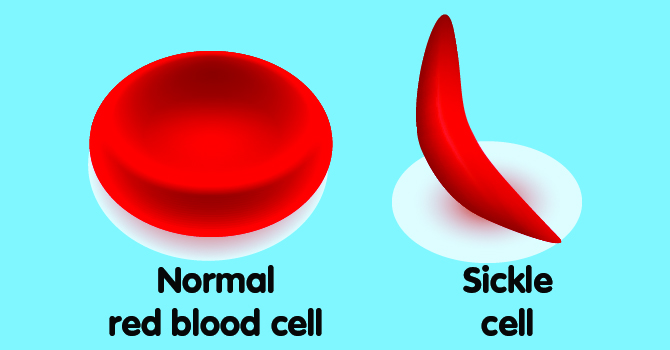Early diagnosis, counselling key to prevent sickle cell diseases

By A Staff Reporter
Kathmandu, Jan. 18: When an earlier study “Prevalence of Anemia among the Reproductive Age Groups of Female” by the Nepal Health Research Council showed Sickle Cell Trait in 19 women out of 781 participants, the Ministry of Health and Population facilitated the council to conduct a study on Sickle Cell Disease in the Tharu population of Bardiya district.
The reason for the study was to determine population based prevalence of the disease and its relation to socio-demographic factors and clinical symptoms in people aged 1-29 year alongside providing post-test counselling to all the participants. The study was then started among 20,000 Tharu participants (60 per cent female) of Bardiya from July, 2017 to January, 2019.
The one-and-a-half-years study’s report was made public by the council through a press-statement on Friday which showed that 11.3 per cent of the total participants had sickle cells.
“Out of 20,000 population, 2,256 (11.3 per cent) have Sickle cell disorder. Among them, 2,111 had Sickle Cell Trait and 145 had sickle cell diseases,” reads the council’s report “Population Based Screening of Sickle cell Disorder in Tharu community of Bardiya District”.
The report further states that among 7,982 males, 874 were affected by Sickle Cell Trait and 75 by sickle cell disease. Likewise, among 12,018 females, 1,237 had Sickle Cell Trait and 70 had sickle cell disease.
Sickle Cell Trait is the condition in which the person inherited sickle cell gene from one of his parents; such people usually don’t have any symptoms of sickle cell disease. However, the one with sickle cell disease show symptoms such as anemia, acute chest syndrome, stroke and jaundice, among others.
Sickle cell disease is an inherited blood disorder associated with hemoglobin disorder; hemoglobin is a molecule in a red blood cell responsible for delivering oxygen throughout the body. People with sickle cell disorder have atypical hemoglobin molecule which can distort red blood cells into a sickle (or crescent) shape.
The disease affects any and all major organs – liver, heart, kidney, gallbladders, eye, bones and joints – of the body, resulting in problems such as increased infections, leg ulcers, bone damage, gallstones, kidney damage, eye damage and multiple organ failure.
“Majority of the participants with Sickle Cell Trait complained of frequent fever, headache and abdomen pain. Likewise, participants with sickle cell disease complained of frequent fever, headache, hand and foot syndrome and joint pain,” the council’s report shows.
While the disease is fatal if the infected individual doesn’t receive medical treatment soon, the council has suggested the government to improve the diagnosis side of the sickle cell diseases throughout the country, mostly in Terai. The earlier reports and prevalence studies have shown that sickle cell disorder is high among the population of Terai, mostly the Tharu population.
According to health experts, the chances for a child to contract sickle cell disease are too high if both the parents are suffering from the disease but low if only one of the parents carries the sickle cell gene. It is the reason why health experts have argued the necessity of sickle cell diagnosis among the mass population of Terai region.
The council has suggested the concerned authorities to facilitate further studies on estimating hemoglobin disorder among the Nepalis population throughout the country and a massive awareness campaign should be brought in action to prevent sickle cell disease.
“Genetic testing and pre-natal service including genetic counselling guideline should be made for counselling of specific age group population (pre-marital, marital, post-marital and pre-natal) that are at risk of sickle cell disease or trait,” suggests the council’s report.
Recent News

Do not make expressions casting dout on election: EC
14 Apr, 2022
CM Bhatta says may New Year 2079 BS inspire positive thinking
14 Apr, 2022
Three new cases, 44 recoveries in 24 hours
14 Apr, 2022
689 climbers of 84 teams so far acquire permits for climbing various peaks this spring season
14 Apr, 2022
How the rising cost of living crisis is impacting Nepal
14 Apr, 2022
US military confirms an interstellar meteor collided with Earth
14 Apr, 2022
Valneva Covid vaccine approved for use in UK
14 Apr, 2022
Chair Prachanda highlights need of unity among Maoist, Communist forces
14 Apr, 2022
Ranbir Kapoor and Alia Bhatt: Bollywood toasts star couple on wedding
14 Apr, 2022
President Bhandari confers decorations (Photo Feature)
14 Apr, 2022










